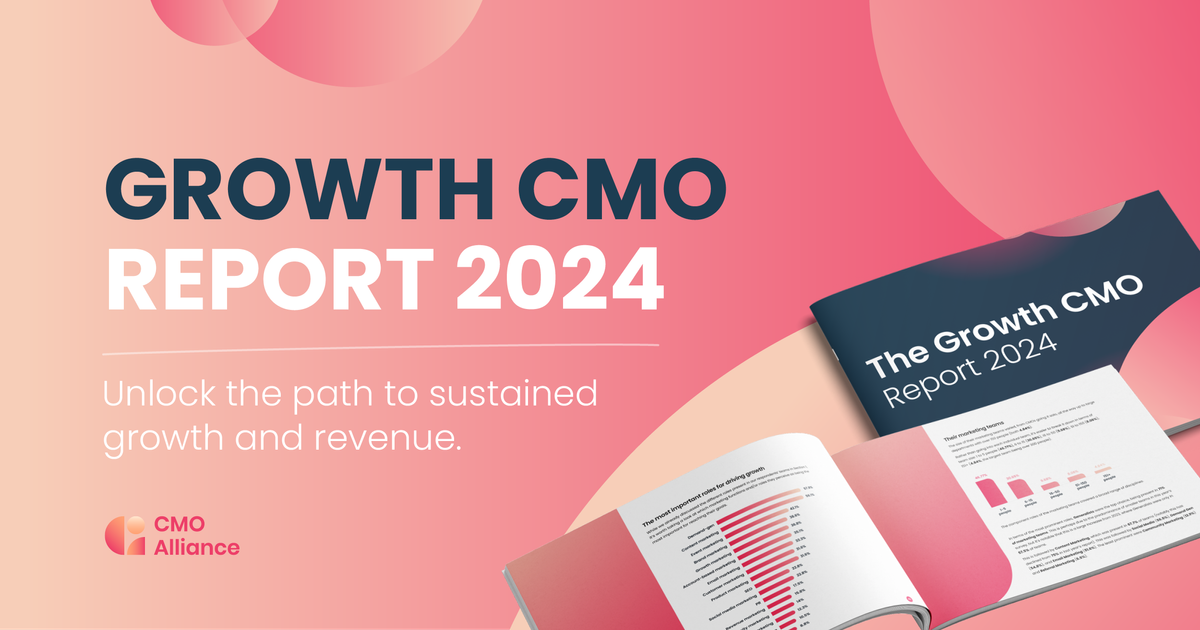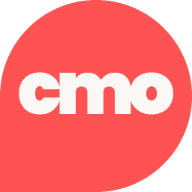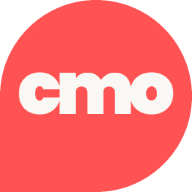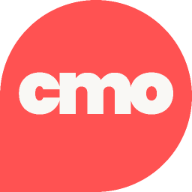SBI Research reported that one of four tensions facing CEOs is prioritizing customer acquisition, but deprioritizing marketing spend.
As Chief Marketing Officers consistently strive to deliver value, tight budgets introduce further challenges. With the pressure to produce results, maximize reach, and drive revenue, leaders are questioning which channels are truly performing and where they can make strategic, cost-effective adjustments to achieve desired outcomes.
Generating leads is challenging amid budget cuts, but results can be achieved with the right strategies.
Key facts:
- Reduced budgets: A recent Gartner survey indicates that marketing budgets have fallen to 7.7% of company revenues in 2024, representing a 15% reduction.
- Strategic adjustments: To manage budget cuts, CMOs are turning to data-driven methods and cost-effective strategies.
- Leveraging AI: Many CMOs consider artificial intelligence essential for boosting efficiency and fostering growth, even with financial limitations.
- Major strategic and budgetary obstacles: inflation, digital return on investment, and interest rates.
As marketing budgets decline, CMOs are forced to reassess their strategies and make difficult decisions about resource allocation.
At the same time, the cost of digital marketing is on the rise, with platforms like Google Ads, LinkedIn, Instagram, and Facebook becoming more expensive. In this challenging environment, AI is emerging as a vital tool for boosting productivity. Gartner reports that many CMOs are investing in AI to enhance efficiency and cut costs.
AI technologies are aiding marketers in optimizing their campaigns, targeting customers more effectively, and making better use of their limited budgets. However, AI is still in its early stages and presents its own challenges.
Looking back, past budget cuts had long-lasting impacts on brand health and growth. Now, CMOs must balance the need for immediate results with the preservation of long-term brand equity. Data-driven decision-making and strategic tech investments will be essential for navigating this “era of less.”
The decline in marketing budgets
CMSWire’s State of the CMO 2024 report echoes Gartner’s findings, revealing that 31% of marketing leaders find justifying budgets to be a major challenge. Additionally, 40% identified a lack of budget as a significant barrier to enhancing their organization’s digital customer experience.
Key strategies to maximize lead generation with limited resources
Customer-centric focus
Leading go-to-market (GTM) teams have a deep understanding of their top customers' current mindset and recognize why these customers value the company’s products and services, especially the impact on their business.
This insight helps them concentrate their efforts and budgets on accounts most likely to have an immediate need for their solutions. These targeted accounts often result in quick wins, making it easier to justify the investment.

Focus on targeted marketing
Targeted marketing involves identifying your ideal customer profile and tailoring your marketing efforts to specifically reach them. By focusing on a well-defined audience, you can avoid wasting your limited resources on individuals who are unlikely to be interested in your product or service.
- Identifying your ideal customer: Consider factors such as age, gender, location, income, interests, and behaviors to define your ideal customer profile.
- Developing a buyer persona: Use this information to create buyer personas that represent your ideal customers. These personas can guide your marketing strategies, ensuring your message resonates with the right audience.
- Personalized solutions: Focus on addressing the needs and problems of your customers, using effective channels to reach them with better solutions
Leverage content
Content marketing is a budget-friendly strategy that can deliver substantial returns. Instead of spending on costly advertising, prioritize creating high-quality, informative content that offers value to your target audience.
This can include blog posts, how-to guides, or videos that address your customers' needs and interests. By optimizing your content for search engines (SEO), you can enhance your online visibility and attract organic traffic without a significant expense.
Enhance your website
Your website is often the first interaction potential customers have with your business. A well-designed site can greatly boost lead generation. Ensure your website is user-friendly, easy to navigate, and features clear calls to action to encourage visitor engagement.
To optimize your website for lead generation, consider these strategies:
- Develop landing pages: Create landing pages tailored to specific products or services with clear calls to action that prompt visitors to take action.
- Streamline forms: Ensure that forms are easy to fill out and only ask for essential information. The simpler the form, the more likely visitors are to complete it.
- Utilize pop-ups: Implement pop-ups to promote lead magnets or encourage visitors to sign up for your newsletter.
Utilize social media
Social media platforms provide a cost-effective means to connect with your audience. Leverage these channels to engage with your customers, share valuable content, and enhance brand awareness.
Organic social media strategies, such as community management and user-generated content campaigns, can effectively foster relationships and loyalty without incurring additional advertising costs.

Partner with other businesses
Partnering with other businesses can be a great way to generate leads without spending much money. Identify complementary businesses that share your target audience and create a mutually beneficial arrangement that allows you to cross-promote each other.
Emphasize customer referrals
Word-of-mouth remains one of the most powerful methods for generating leads. Encourage your satisfied customers to refer to your business by offering attractive incentives.
To maximize lead generation through customer referrals, consider these strategies:
- Provide incentives: Offer discounts, free training sessions, or exclusive content to customers who bring in new business through referrals.
- Simplify the referral process: Make it easy for customers to refer others by providing referral links or email templates.
- Prompt follow-up: When you receive a new referral, follow up quickly and give the referred lead personalized attention.
Collaborating across functions to redefine offers
In some instances, organizations adopt a competitive strategy by partnering with their CFOs to develop high-value offers, adjust pricing, and plan for a longer payback period based on a multi-year customer lifetime value (CLV).
Top-performing GTM teams have well-organized data, enabling them to distinguish between high-performing and low-performing revenue programs. They reallocate investments to focus on high performers, making fewer bets, consolidating investments, and concentrating their resources effectively.
Despite these trends driving success, marketers still need to deliver value under financial constraints. To achieve this, it’s crucial to identify underperforming channels, review conversion benchmarks, and address any deeper strategic issues causing stagnation. By uncovering underlying problems or adopting new strategies, CMOs can tackle challenges and steer towards growth.

Product-Led Growth (PLG)
While PLG has been praised as an ideal approach for B2B SaaS companies to combat rising customer acquisition costs (CAC), some weaknesses are becoming apparent. Consequently, some companies are abandoning their PLG initiatives due to increased expenses.
Companies with a PLG strategy tend to succeed when they have a robust customer success program and a well-coordinated customer marketing approach. Additionally, they should evaluate and prioritize their pipeline based on a customer lifetime value model rather than an unrealistic short-term customer acquisition costs payback period.
Utilize feedback and listening channels to closely analyze customer feedback, paying particular attention to their words and emotions when describing their problems. This will help you better address the “why now?” question for your buyers.
Additionally, if your solution offers genuine benefits related to cost containment or cost reduction, emphasize these as key elements of your value proposition to align with the changing realities of your customers.
Cold list leads
Cold lead lists can be effective with proper execution. Leading GTM organizations use a combination of signal data to identify “in-market” status and determine the optimal time to initiate outbound efforts.
The main challenge lies in the inherently difficult nature of cold leads and the significant effort required from sales development representatives (SDRs) and account executives (AEs) to convert them.
Many companies have allocated their budgets to digital ads to allow AEs to focus on closing deals. However, this often results in AEs losing the skill of working with cold lead lists. To address this, it’s important to ensure that AEs/SDRs, even in a lead-rich environment, generate a portion of the pipeline themselves.
You can set a specific percentage of the overall pipeline for them to source, keeping them in practice with working on cold leads.
I’ve highlighted just a few areas that CMOs can review and potentially refine. Fundamentally, marketers driving growth in this environment are leveraging current insights into customer mindsets and adjusting their positioning and messaging to be more precisely targeted.
They are utilizing data and technology to concentrate resources on high-propensity accounts, minimizing waste in digital ad spend, and making strategic investments in a shorter list of target accounts and programs to engage those accounts effectively.
Want more about growth? Our Growth CMO Report 2024 gives you an in-depth look into the current landscape, from best practices to help you achieve realistic growth goals to how CMOs everywhere are responding to shrinking budgets.




 Follow us on LinkedIn
Follow us on LinkedIn







